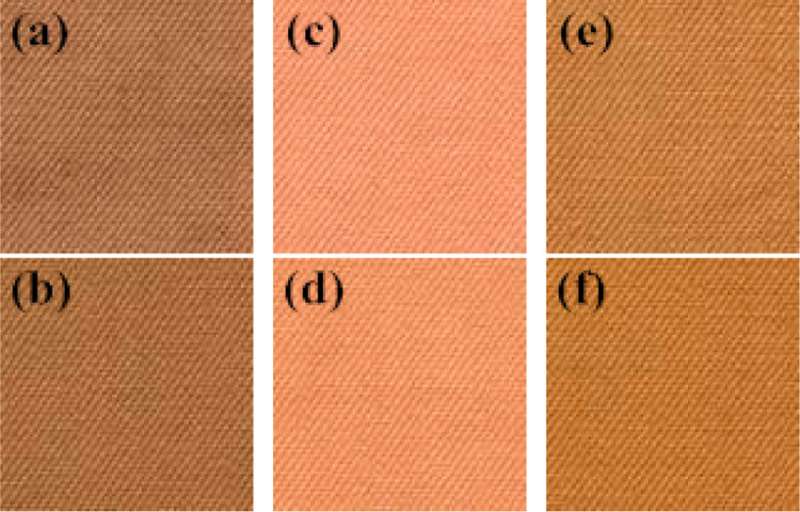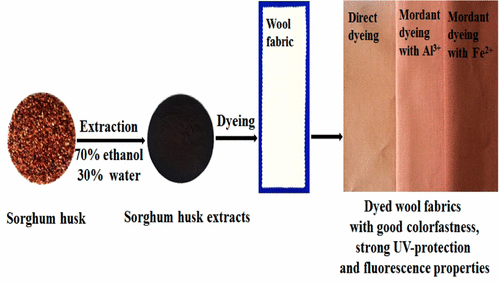Sorghum: Health food, sweetener and now, clothing dye

Sorghum has long been a staple food in many parts of the world, but in the U.S., it's best known as a sweetener and livestock feed. As demand for the grain soars, so does the amount of waste husks. To reduce this waste, scientists report in the journal ACS Sustainable Chemistry & Engineering a new use for it: a wool dye that can add ultraviolet protection and fluorescence properties to clothing.
Sorghum, which looks like pearl couscous, is a hardy, drought-tolerant crop that is gaining popularity as a health food, livestock feed and source of bioethanol. Additionally, scientists are working on transforming the crop's waste for a range of applications, including food coloring and waste water purification. Building further on the colorant possibilities, Yiqi Yang, Xiuliang Hou and colleagues wanted to see if they could develop a practical clothing dye out of sorghum husks.
The researchers tested extracts of husks on wool materials, which turned varying shades of brown. The dyes showed good colorfastness even when the wool was washed, rubbed and ironed. They also added UV protection and fluorescence properties to the materials, which withstood 30 cycles of laundering.

More information: Xiuliang Hou et al. Potential of Sorghum Husk Extracts as a Natural Functional Dye for Wool Fabrics, ACS Sustainable Chemistry & Engineering (2017). DOI: 10.1021/acssuschemeng.6b02969
Abstract
We report a novel application of sorghum husk extracts (SHE) as a natural functional dye for wool fabrics. Sorghum husk is an abundant, cheap and readily available agricultural byproduct. A small proportion of sorghum husk has been used to extract food colorants. In order to add value to sorghum and decrease environmental pollution, a number of investigations need to be undertaken to explore newer application for the husk. This paper investigated the stability of SHE, the colorfastness, UV-protection and fluorescence properties of dyed wool fabrics with SHE by different dyeing methods. SHE had good thermal and pH stability suitable for the dyeing and finishing processes of textiles. Wool fabrics dyed directly or with Al3+ and Fe2+ mordant demonstrated good colorfastness to washing, to rubbing, to wet ironing and acceptable colorfastness to light. The dyed wool fabrics showed good UV-protection and fluorescence properties. After 30 home laundering cycles, the UV-Protection Factor (UPF) and fluorescence intensity of wool fabrics dyed with SHE were still remarkably higher than those of wool fabrics dyed with mixed synthetic dyes with similar shade and depth and undyed fabric. SHE would be a feasible alternative for some synthetic dyes and functional finishing agent.
Provided by American Chemical Society




















